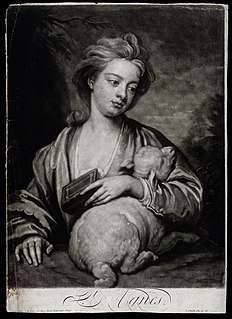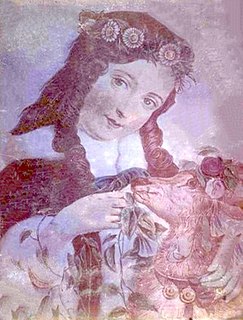
Printmaking is the process of creating artworks by printing, normally on paper, but also on fabric, wood, metal, and other surfaces. "Traditional printmaking" normally covers only the process of creating prints using a hand processed technique, rather than a photographic reproduction of a visual artwork which would be printed using an electronic machine ; however, there is some cross-over between traditional and digital printmaking, including risograph. Except in the case of monotyping, all printmaking processes have the capacity to produce identical multiples of the same artwork, which is called a print. Each print produced is considered an "original" work of art, and is correctly referred to as an "impression", not a "copy". However, impressions can vary considerably, whether intentionally or not. Master printmakers are technicians who are capable of printing identical "impressions" by hand. Historically, many printed images were created as a preparatory study, such as a drawing. A print that copies another work of art, especially a painting, is known as a "reproductive print".

The CMYK color model is a subtractive color model, based on the CMY color model, used in color printing, and is also used to describe the printing process itself. CMYK refers to the four ink plates used in some color printing: cyan, magenta, yellow, and key (black).

Magenta is a color that is variously defined as purplish-red, reddish-purple or mauvish-crimson. On color wheels of the RGB (additive) and CMY (subtractive) color models, it is located exactly midway between red and blue. It is one of the four colors of ink used in color printing by an inkjet printer, along with yellow, black, and cyan, to make all other colors. The tone of magenta used in printing is called "printer's magenta". It is also a shade of purple.

Halftone is the reprographic technique that simulates continuous-tone imagery through the use of dots, varying either in size or in spacing, thus generating a gradient-like effect. "Halftone" can also be used to refer specifically to the image that is produced by this process.

Mezzotint is a printmaking process of the intaglio family. It was the first printing process that yielded half-tones without using line- or dot-based techniques like hatching, cross-hatching or stipple. Mezzotint achieves tonality by roughening a metal plate with thousands of little dots made by a metal tool with small teeth, called a "rocker". In printing, the tiny pits in the plate retain the ink when the face of the plate is wiped clean. This technique can achieve a high level of quality and richness in the print.

Business cards are cards bearing business information about a company or individual. They are shared during formal introductions as a convenience and a memory aid. A business card typically includes the giver's name, company or business affiliation and contact information such as street addresses, telephone number(s), fax number, e-mail addresses and website. Before the advent of electronic communication business cards might also include telex details. Now they may include social media addresses such as Facebook, LinkedIn and Twitter. Traditionally, many cards were simple black text on white stock, and the distinctive look and feel of cards printed from an engraved plate was a desirable sign of professionalism. In the late 20th century, technological advances drove changes in style, and today a professional business card will often include one or more aspects of striking visual design.

Color photography is photography that uses media capable of capturing and reproducing colors. By contrast, black-and-white (monochrome) photography records only a single channel of luminance (brightness) and uses media capable only of showing shades of gray.

Digital printing is a method of printing from a digital-based image directly to a variety of media. It usually refers to professional printing where small-run jobs from desktop publishing and other digital sources are printed using large-format and/or high-volume laser or inkjet printers.

Offset printing is a common printing technique in which the inked image is transferred from a plate to a rubber blanket and then to the printing surface. When used in combination with the lithographic process, which is based on the repulsion of oil and water, the offset technique employs a flat (planographic) image carrier. Ink rollers transfer ink to the image areas of the image carrier, while a water roller applies a water-based film to the non-image areas.

Security printing is the field of the printing industry that deals with the printing of items such as banknotes, cheques, passports, tamper-evident labels, security tapes, product authentication, stock certificates, postage stamps and identity cards. The main goal of security printing is to prevent forgery, tampering, or counterfeiting. More recently many of the techniques used to protect these high-value documents have become more available to commercial printers, whether they are using the more traditional offset and flexographic presses or the newer digital platforms. Businesses are protecting their lesser-value documents such as transcripts, coupons and prescription pads by incorporating some of the features listed below to ensure that they cannot be forged or that alteration of the data cannot occur undetected.

Letterpress printing is a technique of relief printing. Using a printing press, the process allows many copies to be produced by repeated direct impression of an inked, raised surface against sheets or a continuous roll of paper. A worker composes and locks movable type into the "bed" or "chase" of a press, inks it, and presses paper against it to transfer the ink from the type, which creates an impression on the paper.

In offset printing, a spot color or solid color is any color generated by an ink that is printed using a single run, whereas a process color is produced by printing a series of dots of different colors.

Rotogravure is a type of intaglio printing process, which involves engraving the image onto an image carrier. In gravure printing, the image is engraved onto a cylinder because, like offset printing and flexography, it uses a rotary printing press.
Color printing or colour printing is the reproduction of an image or text in color. Any natural scene or color photograph can be optically and physiologically dissected into three primary colors, red, green and blue, roughly equal amounts of which give rise to the perception of white, and different proportions of which give rise to the visual sensations of all other colors. The additive combination of any two primary colors in roughly equal proportion gives rise to the perception of a secondary color. For example, red and green yields yellow, red and blue yields magenta, and green and blue yield cyan. Only yellow is counter-intuitive. Yellow, cyan and magenta are merely the "basic" secondary colors: unequal mixtures of the primaries give rise to perception of many other colors all of which may be considered "tertiary."

In printing, trap expresses the degree to which ink already printed on a substrate accepts another layer printed on top of it compared to how well the substrate accepts that ink.

Gyotaku is the traditional Japanese method of printing fish, a practice which dates back to the mid-1800s. This form of nature printing was used by fishermen to record their catches, but has also become an art form of its own.
Viscosity printing is a multi-color printmaking technique that incorporates principles of relief printing and intaglio printing. It was pioneered by Stanley William Hayter.

Collotype is a dichromate-based photographic printing process invented by Alphonse Poitevin in 1855 to print images in a wide variety of tones without the need for halftone screens. The majority of collotypes were produced between the 1870s and 1920s. It was the first form of photolithography.

In color printing, print registration is the layering of printed patterns to form a multicolor pattern. Registration error is the "position misalignment in the overlapped patterns." Machine components such as the print cylinder, doctor blade assembly, printing plates, stress/friction and more, affect the registration of the machine. Inconsistencies among these components can cause the printing press to fall out of registration; that is when press operators will begin to see defects in their print. There are many different ways to achieve proper registration, many of which employ the alignment of registration marks. Many press manufacturers have installed automatic register systems to assist the operator in getting the print back into proper alignment.
A contract proof usually serves as an agreement between customer and printer and as a color reference guide for adjusting the press before the final press run. Most contract proofs are a prepress proof.















